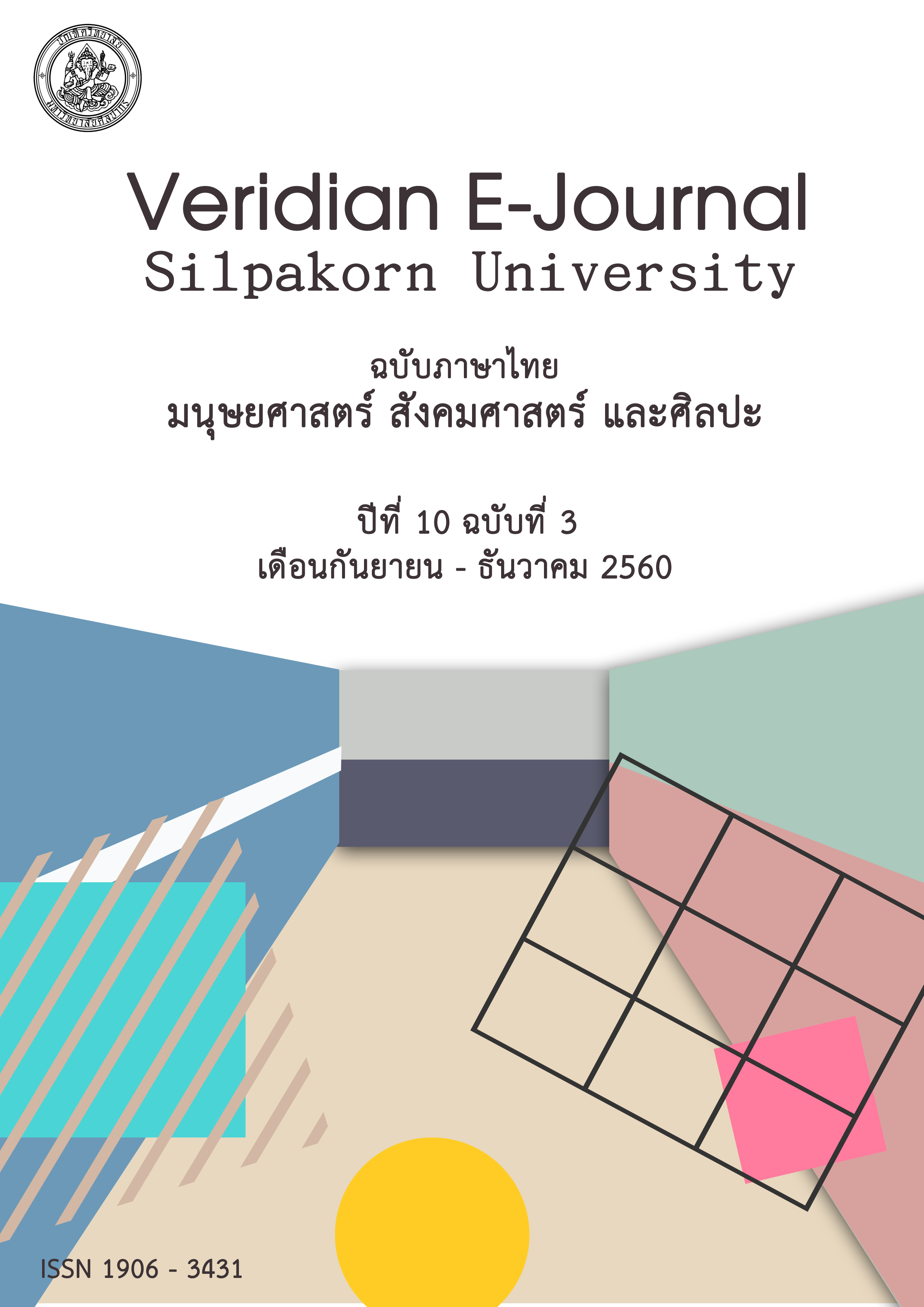โมเดลความสัมพันธ์เชิงสาเหตุของปัจจัยส่วนบุคคลและปัจจัยทางสังคมที่มีต่อความยึดมั่นผูกพันของนักเรียนระดับมัธยมศึกษาตอนปลาย
Main Article Content
Abstract
การวิจัยนี้มีวัตถุประสงค์คือ 1) เพื่อพัฒนาโมเดลความสัมพันธ์เชิงสาเหตุของปัจจัยส่วนบุคคลและปัจจัยทางสังคมที่มีผลต่อความยึดมั่นผูกพันของนักเรียนระดับมัธยมศึกษาตอนปลาย 2) เพื่อตรวจสอบความกลมกลืนของโมเดลความสัมพันธ์เชิงสาเหตุของปัจจัยส่วนบุคคลและปัจจัยทางสังคมที่มีผลต่อความ ยึดมั่นผูกพันของนักเรียนระดับมัธยมศึกษาตอนปลายกับข้อมูลเชิงประจักษ์ กลุ่มตัวอย่างที่ใช้ในการวิจัย คือ นักเรียนระดับชั้นมัธยมศึกษาปีที่ 4-6 จำนวน 554 คน ซึ่งได้มาจากการสุ่มหลายขั้นตอน เครื่องมือที่ใช้ในการวิจัย คือ แบบวัดมาตราส่วนประมาณค่า 6 ระดับที่ผู้วิจัยพัฒนาขึ้น ซึ่งมีค่าความเชื่อมั่นอยู่ระหว่าง 0.854 - 0.916 วิเคราะห์ข้อมูลโดยใช้การวิเคราะห์โมเดลสมการโครงสร้าง ผลการวิจัยพบว่า
1) โมเดลความสัมพันธ์เชิงสาเหตุของปัจจัยส่วนบุคคลและปัจจัยทางสังคมที่มีผลต่อความยึดมั่นผูกพันของนักเรียนระดับมัธยมศึกษาตอนปลายมีความสอดคล้องกลมกลืนกับข้อมูลเชิงประจักษ์ โดยมีค่า χ2 = 112.91 (p = 0.16), df = 99, χ2/df = 1.140 , GFI= 0.98, AGFI = 0.96, CFI = 1.00, RMSEA = 0.016, SRMR = 0.024, CN = 439.39 ตัวแปรในโมเดลร่วมกันอธิบายความแปรปรวนของความยึดมั่นผูกพันของนักเรียนได้ร้อยละ 53
2) ปัจจัยที่มีอิทธิพลรวมสูงสุดและอิทธิพลทางตรงสูงสุดต่อความยึดมั่นผูกพันของนักเรียนระดับชั้นมัธยมศึกษาตอนปลาย คือ อัตมโนทัศน์ทางวิชาการ
The Objectives of this research were to study 1) to develop a causal model of personal and social factors on student engagement of senior high school students who were studying in the schools which belonged to Office of the Basic Education Commission in Bangkok. 2) to examine a causal model of personal and social factors on student engagement of senior high school students with the empirical data. The samples, selected by multi-stage sampling technique, consisted of 554 senior high school students. The data was collected by using six rating scale questionnaires. The questionnaires have reliability coefficient between 0.854 - 0.916. The data were analyzed by structural equation modeling.
The research findings were as follows:
1) The causal model indicating the effects of personal factor and social factor on student engagement of senior high school students fitted the empirical data. The result are as follows; χ2 = 112.91 (p = 0.16), df = 99, χ2/df = 1.140 , GFI= 0.98, AGFI = 0.96, CFI = 1.00, RMSEA = 0.016, SRMR = 0.024, CN = 439.39. The model could describe the variance of student engagement in the percentage of 53.
2) The highest total effect and direct effect of the causal factors on student engagement of the senior high school students was academic self-concept.
